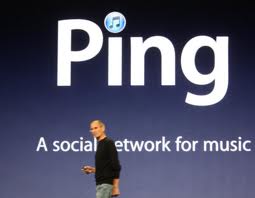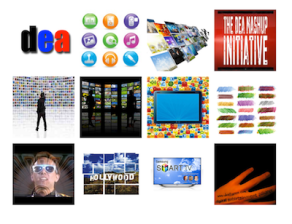the dea skinny on what’s happening:
if video killed the radio star, as the buggles 1979 song noted, it will also kill the free internet as we know it today. perhaps one of the most frustrating things we see is the telecom industry self-disparagingly blaming and flagellating itself for their “telco-head” slow innovation mentality. go easy on yourselves. we don’t even remember that stupid isdn idea from decades ago. we forgive you that. unlike 2-person-inked-hipster-social-video-internet startup types who can move quickly in their studio apartment virtual world-is-flat businesses, telcos have major constraints for good reasons. we all need to get that.
it is a simple fact that telecom companies are huge, their employees numbering in the many hundreds of thousands of people, who deploy billions of dollars of network infrastructure comprised of expensive switches, fibre-optics, cell towers, transmitters, microwave, and yes, miles of conduits and telephone poles. did we mention software? read their balance sheets. these are BIG players. you try doing it. and try doing it quickly. plus they have to deal with pain-in-the-neck regulators in a million different jurisdictions who sometimes want pie-in-the-sky open everything for nothing. in the end, if you want a simpler business to run, buy a large international airline – it is child’s play by comparison. and telcos are the people who supply you your life’s blood: the internet.
to add insult to injury, we all expect it from them for free. like free video. facebook, webex, youtube, netflix, hulu and The Content Which Cannot be Mentioned, porno, which some estimate already consumes almost 30% of the internet at any given time and is video-bandwidth intensive in nature. video, unlike “bursty” interactive traffic which is more easily multiplexed for which the telco nets were originally designed (voice and now data), is long content, persistent in duration and session length and THE ultimate major bandwidth hog which multiplexing technologies cannot help as a “biggest loser” medium as easily. there is short and long form video and the long form is REALLY long.
on video traffic growth, ask the whizzes at cisco if you don’t believe us nor trust what the telco engineers have been saying for ages. the recent cisco visual networking index report which tracks visual networking traffic stats that by 2015, video traffic on the internet will be 70% of all consumer traffic. sure, this is a self-serving vendor forecast (man, did they blow their e-learning traffic growth projects in the past!) but you catch the general drift so go with us on this. they are directionally dead-on. in the ballpark. no one is arguing against their general case.
for a telcom provider, the arithmetic for all this stuff adds up. adds up big. adds up huge. as in billions and trillions of dollars world-wide. by 2015, some projections say worldwide capital spending will reach $225 billion dollars per annum. but we are a spoiled “trophy” generation who expects its sushi and creme brûlée just so and we therefore naturally expect free bandwidth because we are “digitally entitled”, having grown up and actually gotten used to the freemium freakonomics of internet access. the era of over-investment and global crossing and worldcom and excess bandwidth is long over. video ate it up while you were grooving out on youtube videos of singing cats and your company’s mind-numbing webex meetings. but if you do the math kids, you will see the party is over and you need to grow up. video is here to kill it all for all of us.
the stakes:
trillions of dollars over decades in capital expenditures and at least $225 billion/year worldwide by 2015. we said that already. did it sink in? you don’t need a nobel prize in economics to figure out “free internet video” is over. but who will pay? you. many telecom players will start taking it out of your pockets. they have to….it’s only business to quote michael corleone in the godfather. the recent att kerfuffle around “cramming” your cell bill with extra “value added network” charges is only the beginning.
the dea takeaway:
if you are a telecom service provider, consider handling demand with special video rate schemes. yes, we know the natives will revolt and everyone will hate you but somebody has to pay for this. the airline seats are packed to the gills now and airfares are high, but at least, for now, they are temporally profitable. you are already working with the major bandwidth hogs for revenue shares, when they will take your calls, at youtube, hulu, netflix and the porno industry (we have no idea how to contact that last group) as well as the networks. so you have 5 simple alternatives: 1.) revenue sharing with the IP video providers (and that is chump change relative to your future build-out costs) unless you share rev with google, et al. 2.) dampen video demand through new revenue streams a/k/a higher prices, a blunt instrument which works well (aka tariff play) at the access & service layers and then tango dance with regulators to do this as only your century-experienced clever rates & tariffs people and lobbyists know how to do so well, 3.) partner again or re-think cable franchise deals/acquisitions Justice Department be damned, 4.) develop new bundled services like att’s U-verse,to offload it and charge value-add as you are doing now, or 5.) and this is the least attractive, suck it up and build massive parallel new infrastructure and cross-charge and nickel-and-dime everybody else, within the letter of the law for offerings ala internet access and cross-charge and nickel-and-dime everybody else, within the letter of the law for offerings ala internet access.
if you are a video IP TV content provider or content-producer or anyone else creating services, applications and, most importantly content, get used to the idea that you will need to bake increased IP video network telco access, transport and costs into your models now. don’t act shocked or angry when the telcos start to tell you this stuff costs money and that you have been getting a free ride for years. them days is over.
if you are a network-centric hardware, firmware or software infrastructure or service player, start innovating faster. you can make a ton of money if you continue to find new ways to compress, compact, route and shrink down bandwidth-consuming fat into nothing. this will take decades.
for more information, please contact us at 512.825.6866 to discuss the issues more fully and the specific impact & implications to your business. it’s free!






